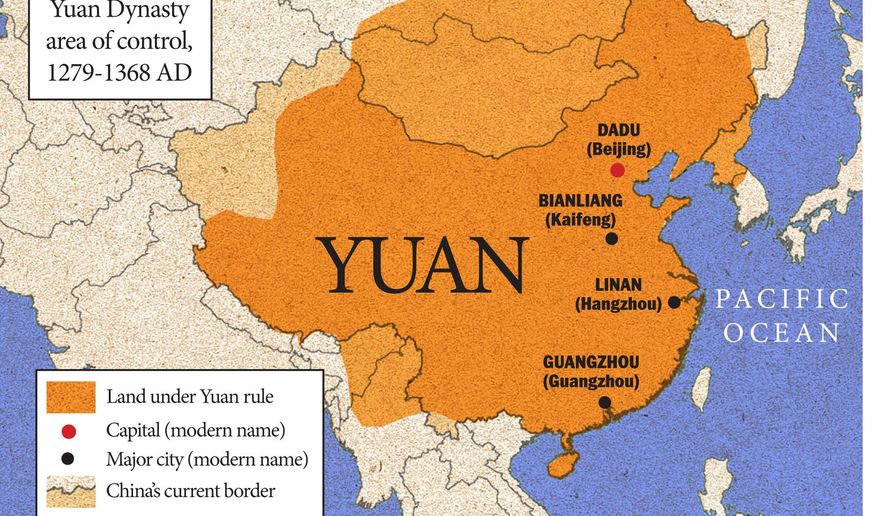OPINION:
Lately, there have been news reports regarding protests in Inner Mongolia, an autonomous region in the north of China, over the introduction of a “bilingual” education system in elementary and middle schools of the region. Under this system, from the new academic year that started on Sept. 1, 2020, Chinese would be the medium of instruction for some specific subjects. It is feared that eventually Mongolian-medium will be completely replaced with Chinese-medium teaching across all school subjects, and the Mongolian language will be wiped out.
Ethnic Mongols consider this move by the Chinese Communist Party-led central government as the final nail in the coffin toward burying their ethnic identity.
Since China took over the regions of southern Mongolia after World War II and gave it the Sino-centric name — “Inner Mongolia,” it has been steadily and institutionally eroding Mongolian culture and forcing Mongolians to adopt Chinese culture. Due to decades of Han migration and intermarriage into Inner Mongolia, ethnic Mongolians have become a minority in their own land, accounting for only about 17% of Inner Mongolia’s population of 24 million.
Basically herders by tradition, even their pastoral culture has been lost as they have been relocated from their homes on the prairies into new housing complexes in towns. While it is being done in the name of alleviating poverty and easing overgrazing, in reality it is to exploit the rich coal mine reserves in the region.
All that is now remaining of the Mongol ethnic identity is their language, which has a unique script that is no longer used even in independent Mongolia, where Cyrillic script has been adopted due to Russian influence. Since even that has now come under a cloud, it is feared that the entire identity of the Mongol people would be erased. They face the same fate as the Tibetans and the Uyghurs in President Xi Jinping’s China.
The Chinese government has been running the program of assimilation in a carefully designed and well-planned way to create a homogenous society of Chinese people with Han culture.
But do the Han Chinese even have the right to stake a claim over the Mongolian people and their land, let alone usurp their entire identity? The answer is a big “No.” And there is historical and literally “unshakeable” evidence for that. It is nothing less than the Great Wall of China itself.
The iconic symbol of the Chinese civilization — the Great Wall of China — was built in the first place, and rebuilt, extended and further fortified over centuries by different dynastic rulers of China for a purpose to keep away the “barbarians” (referred to as “Yi” in Chinese) who came from the north. These so-called barbarians who led a nomadic life, were considered to be too “uncivilized” by the Han Chinese rulers to be allowed to enter their civilization.
Thus, the Great Wall of China was built as the northern frontier or boundary of China. And the Inner Mongolia Autonomous Region (IMAR) of today lay beyond this historic northern boundary wall.
In other words, from the time the first unified Empire of China was established by Qin Shihuang in 247 BCE, until the end of the Song dynasty in 1279, the pastoral lands of the Mongolian region and the nomadic people who inhabited there were never a part of the Chinese Empire. The Han Chinese civilization was for centuries centered around and limited to the agricultural area in the southeastern part of present-day China.
Interestingly, it was only in 1279, when Kublai Khan, the grandson of the Great Mongolian leader and warrior Chinggis Khan, overthrew the Song Emperor and established the Mongol Yuan dynasty that the land and people of proper China and Mongolia came together under a common rule. And it was the Mongol rule, not Chinese.
So technically, it was not Mongolia which was a part of China, but China which became a part of the Mongol Empire that spread far and wide encompassing even Eurasia. In fact, even Beijing was made the capital of China for the first time by the Mongol rulers.
Based on these historic facts, the CCP’s claim that Mongolia is a part of China since immemorial time is questionable. In any case, the Mongolian people of the so-called Inner Mongolian Autonomous Region, which is under the rule of the People’s Republic of China as an outcome of the World War II and the CCP victory in the issuing civil war, deserve every right to preserve their cultural identity and resist cultural genocide.
Yet, so far in the past three decades, the Mongolian minority in China has been rather accommodating and coexisting relatively peacefully with Han Chinese. Other than an episode in 2011, when they protested over the killing of a Mongolian herdsman by a mining truck, they have caused little trouble to the Chinese leadership.
But, why is the Chinese Communist Party leadership now antagonizing them further and pushing them to the wall, which seems inviting trouble for itself? The only explanation is that the move is part of a larger campaign to impose cultural conformity by sinicizing any non-Han cultural identities existing within the boundary of the People’s Republic of China, including minority religions and languages.
The story of Mongolians is underreported by the international media, and therefore less well-known internationally than what is happening to China’s other minorities in Xinjiang and Tibet. Nonetheless, what happens in Inner (or Southern) Mongolia is also a cultural genocide, the CCP’s attempt to destroy a proud culture in the name of “Sinicization.” It should not be left alone.
• Jianli Yang is founder and president of Citizen Power Initiatives for China. Lianchao Han is vice president of Citizen Power Initiatives for China.




Please read our comment policy before commenting.